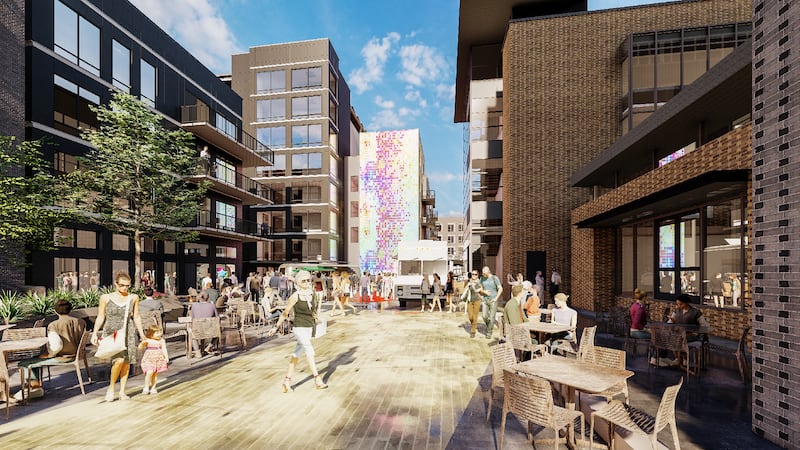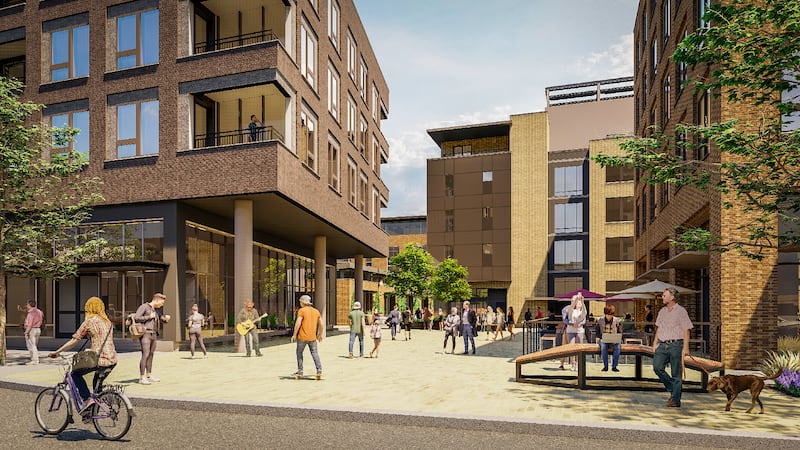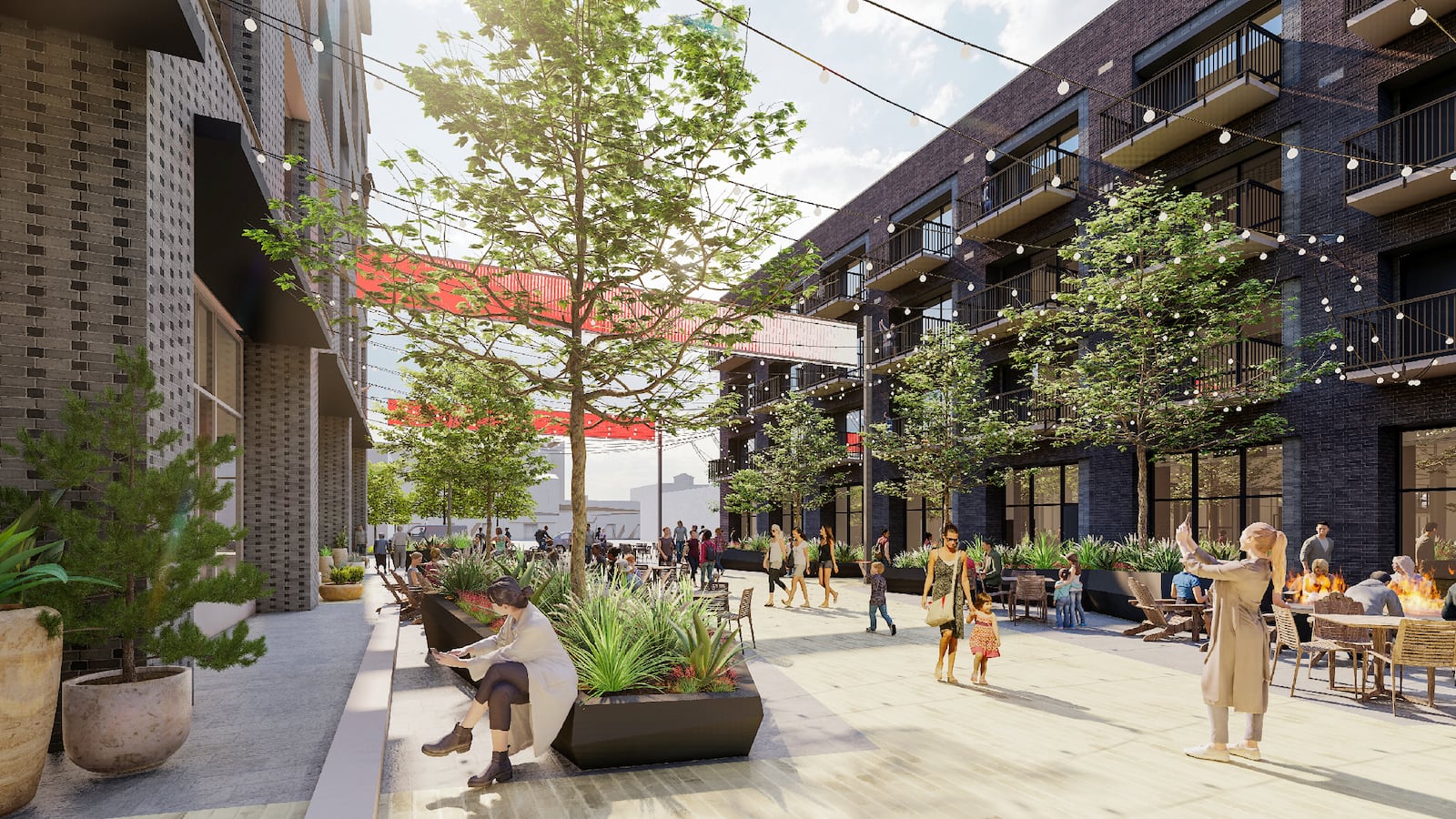This story appears in the 2024 Advisor, a publication sponsored by Colliers Utah.
Nicknamed “Junction City,” Ogden, Utah, has long been known for its roots as a rough railroad town. It was classified as the first permanent development in Utah by European settlers, where Union Station was to become a major terminal for the transcontinental railroad. Historic 25th Street was a bustling strip of businesses and hotels originally built for railroad workers and travelers passing through. Today, with a unique combination of mountainous terrain and urban cityscape, Ogden is attracting visitors and new residents at a rapid rate—and an involved local community is setting the tone for the next generation of the city and its inhabitants.
A crucial component to the Ogden boom is the city’s intentional effort to support local arts, culture and events. In recent years, Ogden City established the Nine Rails Creative District between Grant and Madison Avenue from 24th to 26th Street. Within this district are protective zonings put in place requiring developments to include public art on their buildings.
“What the arts and culture scene in Ogden does is make it easier to develop,” says Lorie Buckley, Ogden City arts administrator. “We have created an environment that is attractive to visit. People want to live here because there are a lot of things culturally and outside of work that enhance your quality of life.”
Buckley—along with members of the Ogden Arts Advisory Committee and the Arts, Culture and Events Division—has been working to bring to life a master plan created by the city that designates more live/work combination spaces for creatives to exist, spaces for culture and community to thrive, and a lively downtown area that brings in great revenue to the city.
“It is a small amount of investment but a huge return when you put money into the arts,” Buckley says.
The Ogden City Council also adopted the Make Ogden Downtown Master Plan, which contains new zoning standards and a new zoning map to increase downtown employment, housing and walkability. This plan “establishes a 25-year vision for the growth of downtown Ogden through a series of catalytic projects in key locations around the Central Business District, which will occur in ‘episodes’ or phases in which the City investment in the public realm, coupled with developer incentives, will attract private investment.”
One of the first stages of the Make Ogden plan included the Ogden Express rapid transit line, which opened in August 2023. Another key project is known as the WonderBlock development, a private/public partnership between developer J. Fisher Companies and the Ogden City Redevelopment Agency.

“The WonderBlock development will be a combination of residential dwellings, retail, offices, services, food and beverage, as well as hospitality,” Ogden City’s website reads. “All of the project elements will be connected via attractive public spaces that will support special events, creating a unique sense of place that will draw people throughout the region to our awesome downtown.”
Featuring 354 high-amenity residential units, the WonderBlock will bring more residents to the downtown area. The development will also include a new hotel and approximately 100,000 square feet of Class A office space, 50,000 square feet of retail space, 20,000 square feet of grocery store space, and access to public parking, pedestrian pathways and amenities. A projected completion date has not yet been announced.
In early December, Amir Jackson—founder of the key arts nonprofit organization Nurture the Creative Mind—organized a community Q&A with Damen Burnham of Ogden City, Robb Berg of Design Workshop and Ryan Davis of J. Fisher Companies. The event intended to get locals involved in a conversation with those working on the massive redevelopment of the Union Station building and the surrounding land, another component of the revitalization of Ogden’s Downtown area. Davis and Berg highlighted the specifics of the Union Station project and answered questions from concerned community members about water usage, overcrowding, housing costs and impacts on local businesses, assuring residents that they were listening to feedback and being attentive to the needs of the city.
Attendees learned that the Union Station project and the development projects surrounding it are intended to be of growth benefit to one another. Burnham explained that areas like the viaduct at 24th Street, the WonderBlock, Historic 25th Street and other surrounding areas will all be revitalized in efforts to “reverse mistakes made in the past.” He shared that decisions made in the city prior to the 2000s regarding housing, industrial and business developments actually drove people further away from Ogden and into neighboring cities.
“When we look at individual projects, we want them to align with the Make Ogden Downtown Development Plan,” Burnham said. “That plan looks at development over the next 20-30 years in Ogden as a means to help continue Ogden on the path toward financial sustainability from a municipal service standpoint, as well as providing access to service and opportunities. As for the future, we do try to take a look at Ogden’s past successes and failures. Ogden’s original success came from vast economic opportunities mixed with an urban downtown development pattern. Make Ogden looks to renew Ogden as the hub for economic opportunity in northern Utah.”
Colliers Utah EVP Don Enlow leads a team of real estate professionals that specializes in the industrial segment of Ogden. Enlow believes Ogden continues to be the industrial anchor in the “top of Utah.”
Large sections of the city are currently utilized for industrial purposes, such as the Business Depot Ogden, which sits on 1,118 acres with 13 million square feet of warehousing, manufacturing and office space with an additional 225 acres of ground available for new development. Enlow highlights the value of this area, saying, “Business Depot Ogden has been an incredible economic driver, though large available development parcels in the park are becoming more limited.”
Enlow believes the anticipated developments to the west of Ogden—which include the 903-acre parcel looking to be designated as an inland port and the planned Promontory Commerce Center business park—will add valuable office warehouse and manufacturing space.
“As there becomes more certainty regarding interest rates in the coming year, developers will have a clearer picture of development challenges and overall costs,” he continues. “The vacancy rates for office warehouse and manufacturing space in Ogden and the surrounding areas remain relatively low, which bodes well for future development.”


